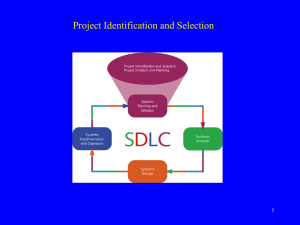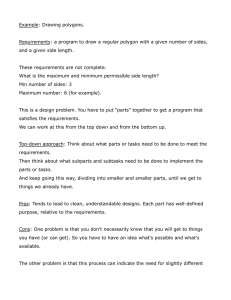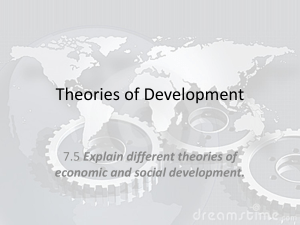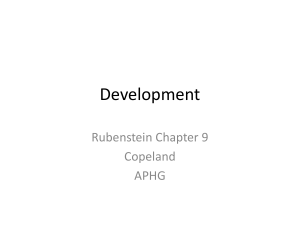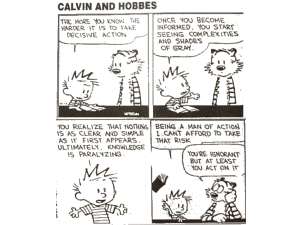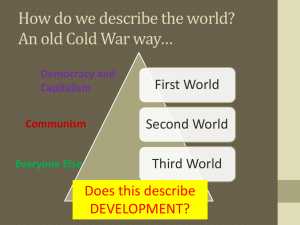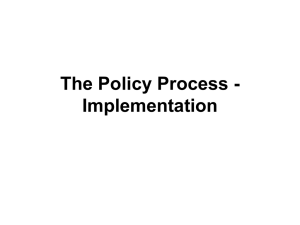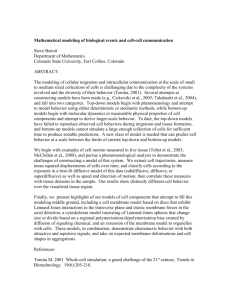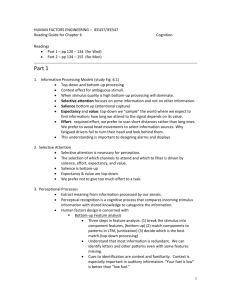Human Topic 4 Development Dilemmas
advertisement
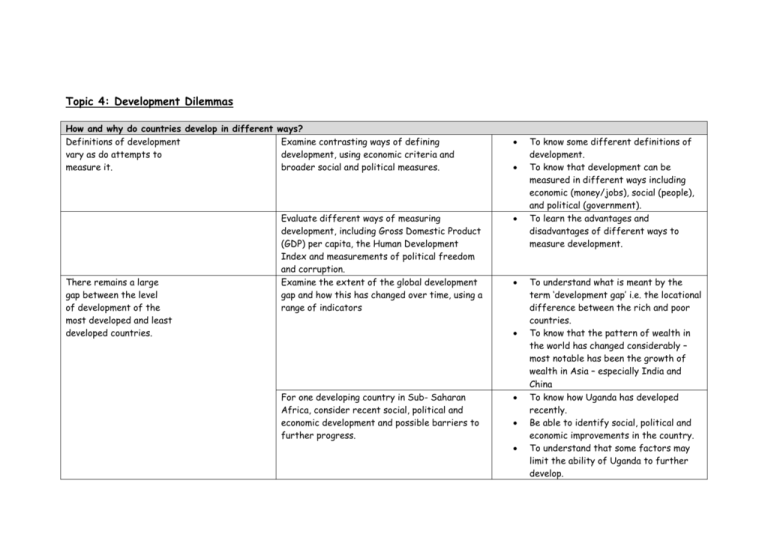
Topic 4: Development Dilemmas How and why do countries develop in different ways? Definitions of development Examine contrasting ways of defining vary as do attempts to development, using economic criteria and measure it. broader social and political measures. There remains a large gap between the level of development of the most developed and least developed countries. Evaluate different ways of measuring development, including Gross Domestic Product (GDP) per capita, the Human Development Index and measurements of political freedom and corruption. Examine the extent of the global development gap and how this has changed over time, using a range of indicators For one developing country in Sub- Saharan Africa, consider recent social, political and economic development and possible barriers to further progress. To know some different definitions of development. To know that development can be measured in different ways including economic (money/jobs), social (people), and political (government). To learn the advantages and disadvantages of different ways to measure development. To understand what is meant by the term ‘development gap’ i.e. the locational difference between the rich and poor countries. To know that the pattern of wealth in the world has changed considerably – most notable has been the growth of wealth in Asia – especially India and China To know how Uganda has developed recently. Be able to identify social, political and economic improvements in the country. To understand that some factors may limit the ability of Uganda to further develop. How might the development gap be closed? Development strategies vary in theory. Use theories of development to help explain why societies develop over time, including Rostow’s modernisation theory and dependency theory. Levels of development may vary within a country with regional differences evident, especially between an urban core and a rural periphery. Types of development vary between top-down and bottom-up strategies. Compare the characteristics of top-down and bottom-up strategies in terms of their scale, aims, funding and technology. Evaluate the impact of one large topdown project, e.g. a dam, on different groups of people in a developing country. To know that theories have been put forward about how countries develop. To be able to describe Rostow’s theory – the five stages that countries may progress through as they develop. To know that not all theorists agreed with Rostow’s model and put forward alternative models To understand the dependency theory and how rich countries have affected the development of poorer countries. To know that levels of development within one country can vary. To know what is meant by the terms core and periphery. To know the reasons for the ‘core urban’ areas in Brazil. To know the reasons for the peripheral rural areas in Brazil. Be able to name a core region and a peripheral region in Brazil. To know the main characteristics of a top-down strategy and a bottom up strategy. To be able to discuss the differences between the two strategies in terms of scale (size), aim (what they are trying to do), funding (where the money comes from) and the technology they use. To know how one top-down project e.g. Three Gorges Dam, has affected different people.
